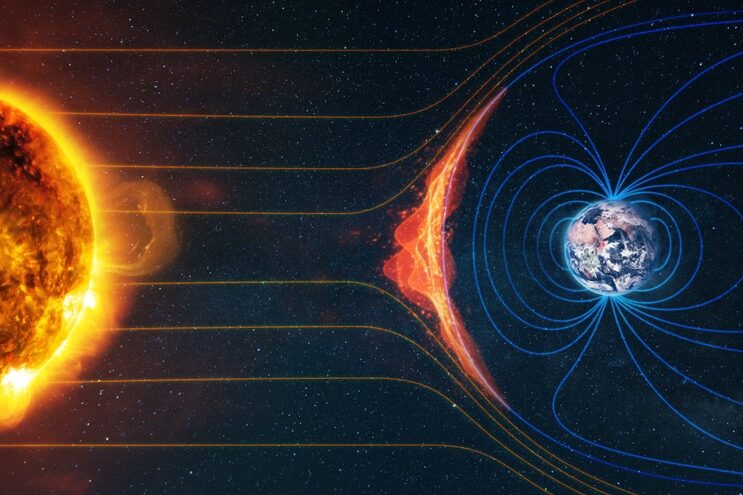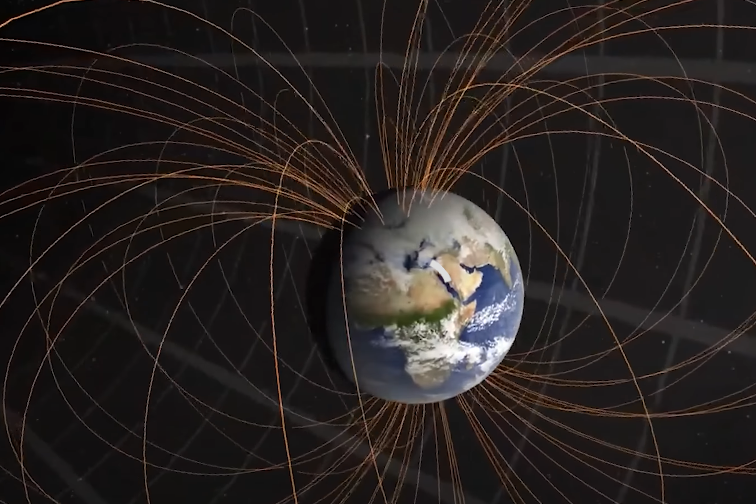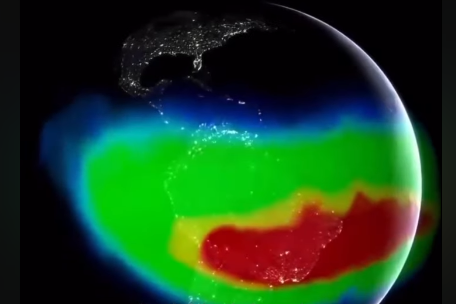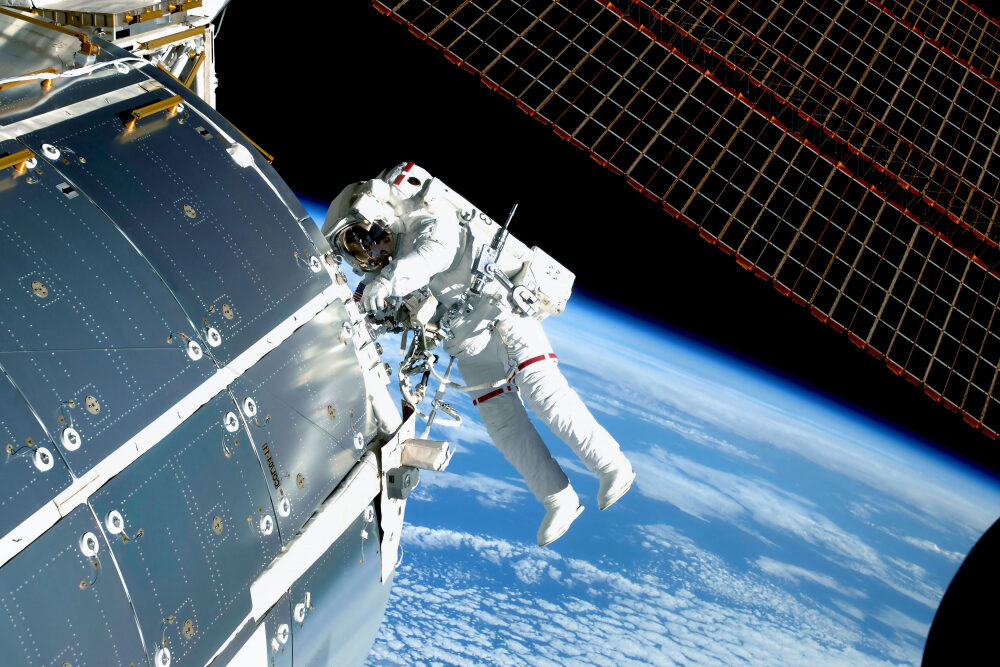1. The Magnetic North Pole Is Drifting Faster Than Ever

According to the Smithsonian Magazine, the Earth’s magnetic north pole has been on the move, but in the last few decades, something strange has happened—it’s started drifting at an unprecedented speed. In the early 1900s, it moved at a steady pace of about 10 miles per year. Then, in the 1990s, it suddenly accelerated to nearly 34 miles per year, racing across the Arctic toward Russia. This rapid shift has caught scientists off guard, as they struggle to understand why the movement has become so erratic.
The consequences of this shift extend far beyond a simple change in navigation maps. The magnetic field is crucial for everything from GPS systems to aviation, and a constantly moving pole means that navigation tools need frequent recalibrations. Worse still, some researchers believe this is a sign that we could be heading toward a complete magnetic pole reversal—an event where the north and south poles swap places. While these reversals have happened many times in Earth’s history, the impacts on modern civilization remain a mystery.
2. The Weakening of Earth’s Magnetic Shield Could Be a Big Problem

The Earth’s magnetic field acts as an invisible shield, protecting us from harmful solar radiation and cosmic rays. But in recent years, scientists have detected a troubling trend—our magnetic field is getting weaker. Over the past two centuries, it has lost about 10% of its strength, and some areas, like the South Atlantic Anomaly (a region over South America and the Atlantic Ocean), have seen even more dramatic weakening.
This could have serious consequences for both technology and life on Earth. A weaker magnetic field means that more radiation from the sun and space can reach our planet’s surface, potentially disrupting satellites, damaging power grids, and even increasing health risks for astronauts and airline passengers. Some experts worry that this weakening is another sign that we’re heading toward a pole reversal, which could take centuries to complete, leaving us vulnerable in the meantime.
3. A Magnetic Reversal Could Cause Chaos—But When Will It Happen?

Earth’s magnetic poles have flipped many times in the past—on average, about once every 200,000 to 300,000 years. The last full reversal, called the Brunhes-Matuyama reversal, happened around 780,000 years ago. That means we’re long overdue for another one. But predicting when and how quickly it could happen is incredibly difficult, as the process is far from regular.
If a reversal were to happen within our lifetimes, it wouldn’t mean instant disaster, but it would cause serious disruptions. Compasses would point in the wrong direction, migratory animals that rely on the magnetic field could become disoriented, and power grids could experience widespread failures due to increased solar radiation exposure. While some scientists believe that we are only in the early stages of a shift, others think we could see more dramatic changes in the coming decades.
4. The South Atlantic Anomaly: A Growing Mystery

One of the most puzzling aspects of Earth’s changing magnetic field is a strange region known as the South Atlantic Anomaly (SAA). This area, stretching from South America to the southern Atlantic Ocean, is where the magnetic field is significantly weaker than anywhere else on the planet. Scientists have been monitoring this anomaly for years, and it appears to be growing larger and more unstable.
For satellites and spacecraft passing through the SAA, the weakened magnetic field means they are bombarded with higher doses of radiation, leading to frequent malfunctions and even permanent damage. The Hubble Space Telescope, for example, regularly shuts down its instruments when passing through this zone to avoid being fried by radiation. Some researchers believe this anomaly could be an early sign of a larger magnetic shift or even a precursor to a full-scale pole reversal. The big question remains—how much worse will it get?
5. Could a Pole Reversal Trigger Mass Extinctions?

The last time Earth’s magnetic field flipped completely, humans weren’t around to witness it—but scientists have studied the effects of past reversals through geological records. While no clear link between pole reversals and mass extinctions has been established, there is some concerning evidence. Around 42,000 years ago, a temporary magnetic shift known as the Laschamps Event weakened the magnetic field significantly, allowing dangerous radiation levels to reach Earth. Some scientists believe this could have contributed to major climate shifts, increased lightning storms, and even the extinction of some large animal species.
If another pole reversal were to occur today, the effects could be even more severe due to our reliance on technology. Increased solar radiation could lead to widespread power outages, disrupted communication networks, and damaged satellites. In a worst-case scenario, entire power grids could be knocked offline for months or even years, causing chaos in industries that depend on stable electricity, including healthcare, banking, and transportation.
6. The Role of Earth’s Core in the Magnetic Field Mystery

The Earth’s magnetic field is generated deep within its core, where molten iron moves in complex, swirling patterns. This process, known as the geodynamo, is what creates the invisible force field that shields our planet. But recent studies suggest that changes in the Earth’s core may be responsible for the rapid shifts in the magnetic field. Some researchers believe that parts of the molten core are cooling unevenly, causing disruptions in the flow of liquid iron and leading to the strange behavior we’re seeing today.
Understanding these changes is incredibly difficult because the Earth’s core lies nearly 2,000 miles beneath the surface. Scientists use seismic data and computer models to try to predict what’s happening, but there are still many unanswered questions. If the core’s movement continues to shift unpredictably, it could accelerate the weakening of the magnetic field, making future pole reversals more likely.
7. The Impact on Animals That Use Magnetic Navigation

Many animals rely on the Earth’s magnetic field to navigate, including birds, sea turtles, and even some insects. If the field continues to shift dramatically, these species could become disoriented, leading to changes in migration patterns and possibly even population declines. Researchers have already observed strange behavior in certain bird species, with some failing to reach their traditional breeding grounds due to altered magnetic signals.
Sea turtles, which return to the beaches where they were born to lay their eggs, could also be at risk. If the magnetic field shifts significantly, they might be unable to find their way back, disrupting their reproductive cycle. Even some species of bacteria and fish use Earth’s magnetic field to orient themselves, meaning that changes could ripple through entire ecosystems in ways we don’t yet fully understand.
8. How Scientists Are Tracking the Magnetic Field’s Changes

Despite all the uncertainty, scientists are closely monitoring the magnetic field using satellites like the European Space Agency’s Swarm mission. These satellites collect data on the strength and movement of the field, helping researchers track changes in real time. By analyzing this data alongside historical records, they hope to develop better models for predicting future shifts.
However, predicting exactly when a full-scale pole reversal might happen remains incredibly difficult. Some experts believe we could be witnessing the early stages of a flip, while others argue that this could simply be a temporary wobble in the field’s long history of fluctuations. Regardless of the timeline, continued monitoring is crucial, as even small changes in the magnetic field can have significant consequences for technology, wildlife, and human civilization.
9. Could We Prevent a Magnetic Catastrophe?

If the magnetic field continues to weaken, some scientists have speculated about whether humanity could intervene to prevent major disruptions. Ideas range from launching massive satellites to generate artificial magnetic shielding to developing new infrastructure that could withstand increased radiation exposure. However, these ideas are purely theoretical for now, and most researchers agree that we are largely at the mercy of natural forces.
The best way to prepare for potential magnetic shifts is to build more resilient systems. Updating power grids, reinforcing satellite technology, and improving GPS accuracy are all steps that could help minimize disruptions. Governments and space agencies are taking the issue seriously, but with so much uncertainty, the best we can do is continue studying the Earth’s core and magnetic behavior to understand what’s coming next.
10. Should We Be Worried?

The thought of Earth’s magnetic field shifting unpredictably is unsettling, but experts stress that there is no immediate cause for panic. While the magnetic poles are moving faster than before, and the field is weakening in some areas, a full-scale reversal could still be thousands of years away. Even if it happens sooner, it is unlikely to be an overnight catastrophe—instead, it would be a slow process that humanity could adapt to over time.
That said, the potential risks are real. Increased solar radiation exposure, disrupted navigation systems, and threats to wildlife are all concerns that scientists are watching closely. For now, the best course of action is to stay informed, support continued research, and ensure that our technology is prepared for the unexpected twists and turns of Earth’s magnetic field. The planet has seen many reversals before, and life has always found a way to adapt. But in a world so dependent on technology, the next shift could test us in ways we’ve never faced before.


